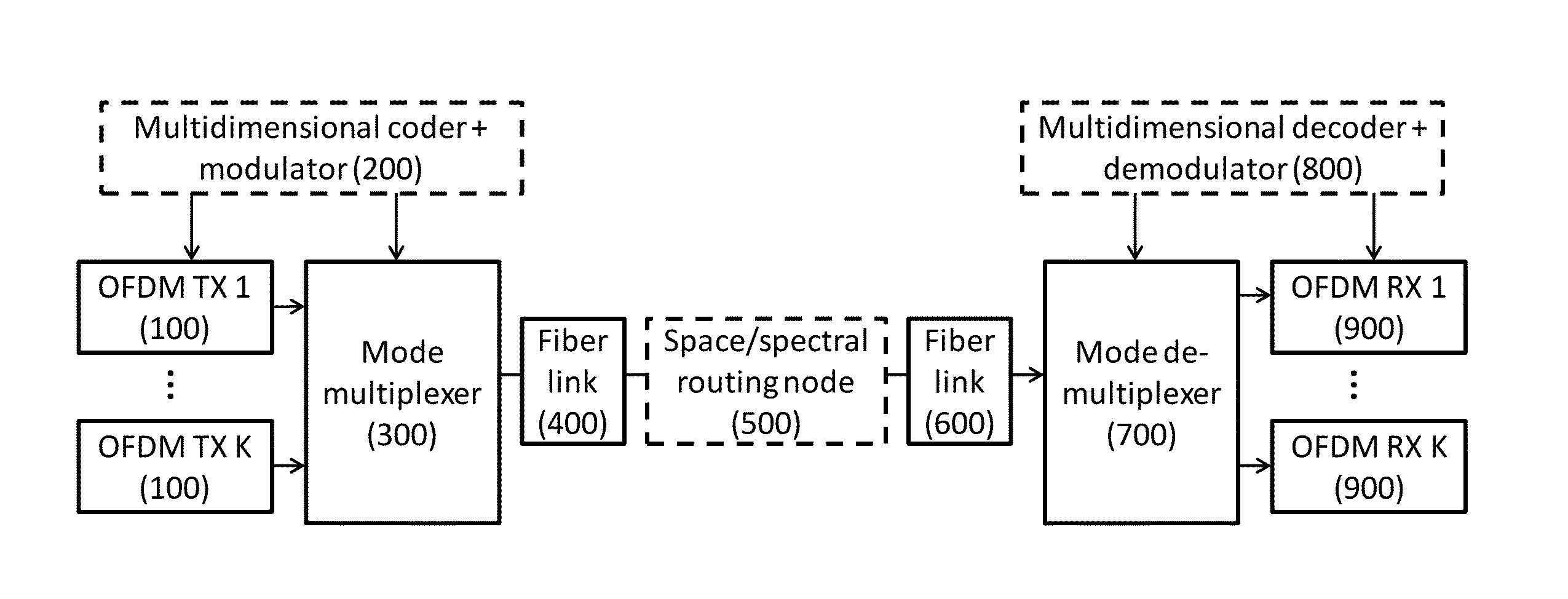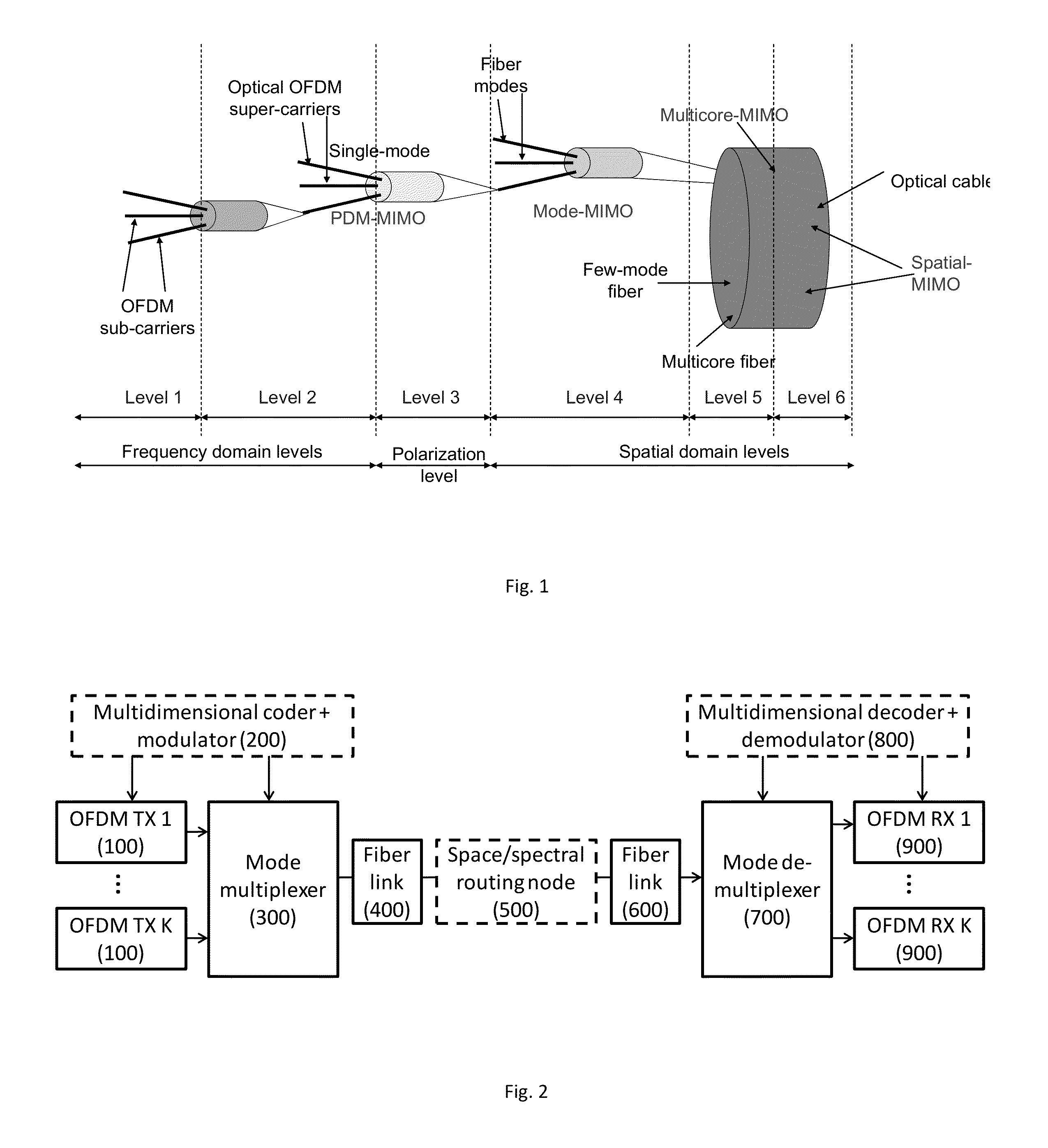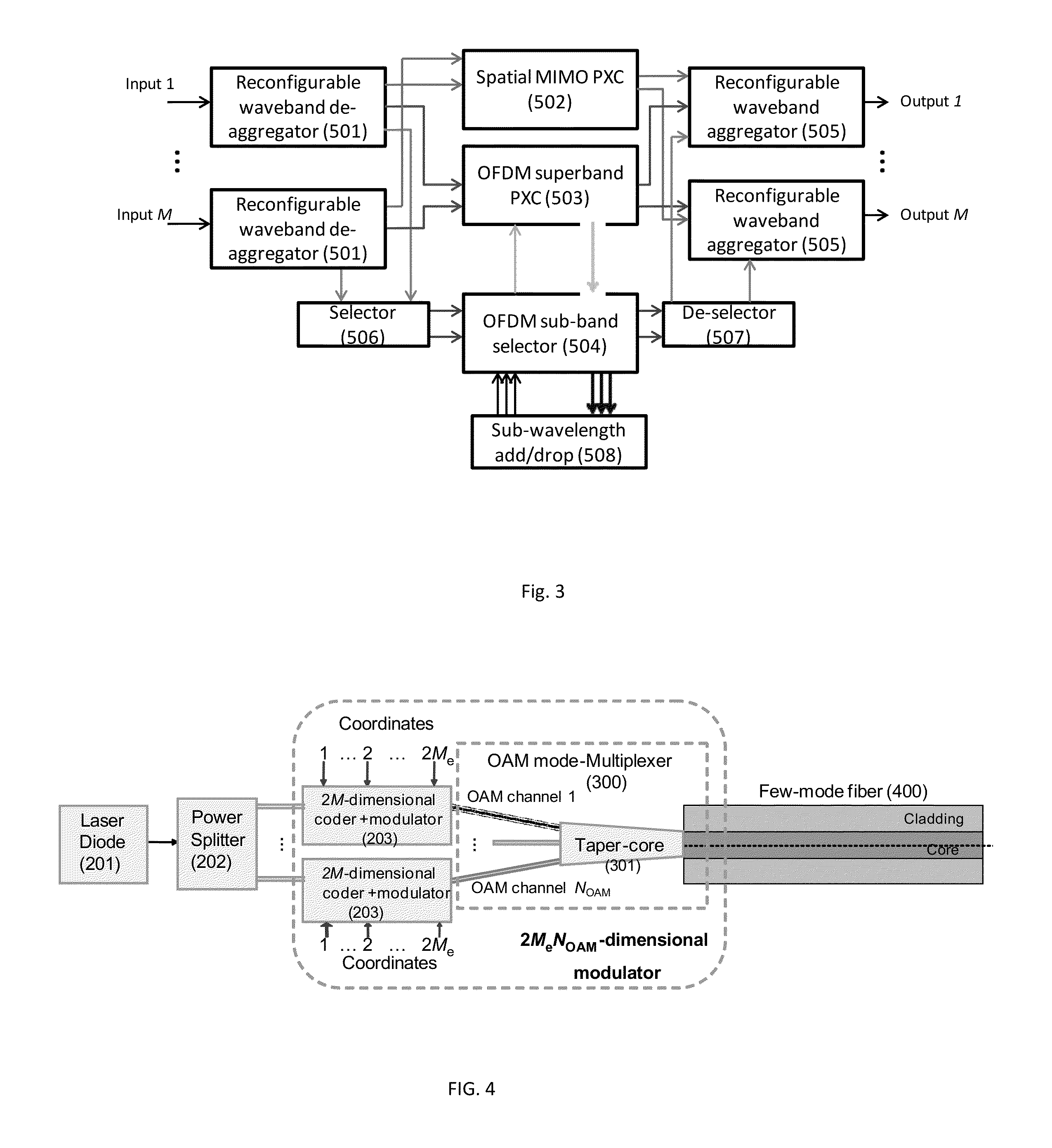Dynamic multidimensional optical networking based on spatial and spectral processing
a multi-dimensional optical network and dynamic technology, applied in the field of optical communication, can solve the problems of significant limits to flexibility, reducing bandwidth efficiency in future mixed-rate, heterogeneous optical networks, and substantial bandwidth was
- Summary
- Abstract
- Description
- Claims
- Application Information
AI Technical Summary
Benefits of technology
Problems solved by technology
Method used
Image
Examples
first embodiment
[0025]In FIG. 2, multicore optical fibers are exploited. From the optical networking perspective, switching between individual cores in optical fibers could be compared to switching happening at smart patch panels. Some cores can be utilized for connections between add / drop sites, while others can be exploited for through-traffic. Multicore optical fibers can thus be treated as a “close-up” picture of fiber-level switching for optical cables. However, compact drop / continue and add / drop devices that are compatible with multicore fibers would be required. It is expected that these will be developed in the future, once multicore fibers application gain momentum.
second embodiment
[0026]In FIG. 2, multimode (or more specifically few-mode) fibers are used. In this case, there is also significant networking potential in the spatial domain multiplexing. For example, if we assume that mode launch and detection can be accomplished by compact spatial multiplexers / demultiplexers, known from prior art, we can envision the following scenario: mode LP01, carrying a polarization-multiplexed signal, can be coupled to LP01 again, or switched to mode LP11. In both cases modes will be assigned for through traffic, while mode LP21 and a possibly couple more higher order modes can be assigned for shorter add / drop paths. Add / drop MUX design thus includes spatial arrangement for extraction and introduction of specific modes, while fiber tapering can be used for easier fiber connections.
[0027]To enable the spectral domain networking proposed here, instead of fixed grid, a flexible grid or even “gridless” spectral arrangement is used to provide much more flexibility from a networ...
PUM
 Login to View More
Login to View More Abstract
Description
Claims
Application Information
 Login to View More
Login to View More - R&D
- Intellectual Property
- Life Sciences
- Materials
- Tech Scout
- Unparalleled Data Quality
- Higher Quality Content
- 60% Fewer Hallucinations
Browse by: Latest US Patents, China's latest patents, Technical Efficacy Thesaurus, Application Domain, Technology Topic, Popular Technical Reports.
© 2025 PatSnap. All rights reserved.Legal|Privacy policy|Modern Slavery Act Transparency Statement|Sitemap|About US| Contact US: help@patsnap.com



